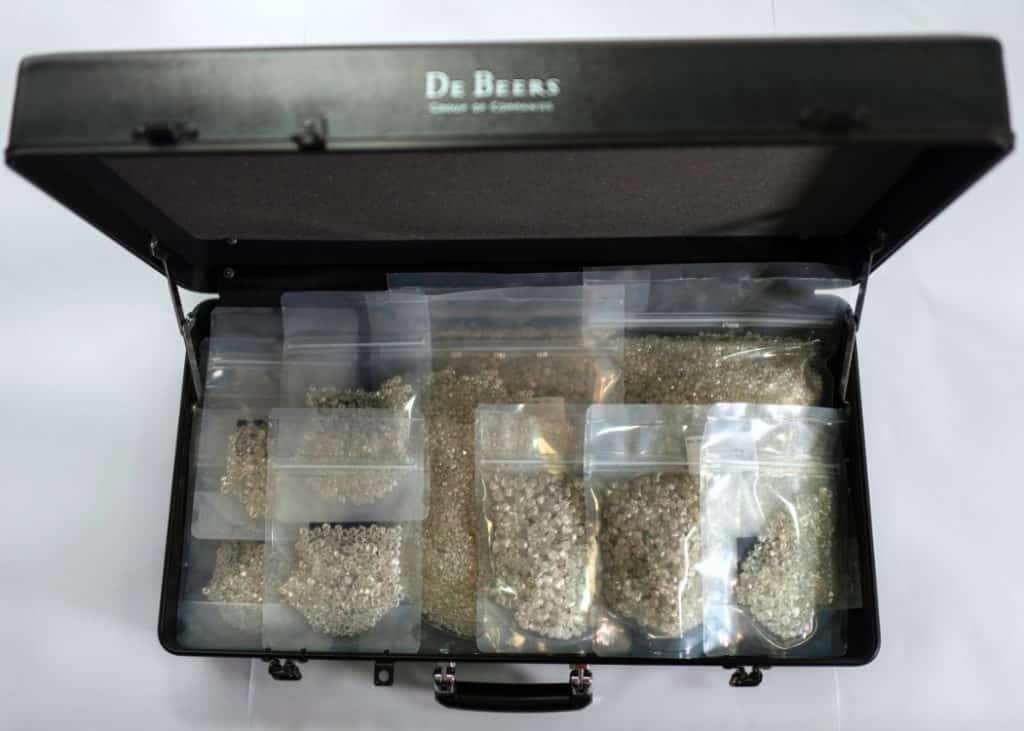Blog
Home » Diamonds blog » De Beers Cuts 10% of Sightholders in 2021 Shakeup
Focus on

The sightholder system is a process according to which an exclusive group of De Beers clients are able to buy goods directly from the mining company at 10 sales events, or sights, during each calendar year.
At the end of 2020, there were some 80 sightholders, but with De Beers’ six-year contracts with its buyers expiring at the end of 2020, the company had asked them to reapply within one of three categories — dealers, manufacturers and integrated retailers.
De Beers is now reportedly contacting the clients to inform whether their applications have been approved. According to the Bloomberg news service, around 10 existing sightholders are expected to discover that they have been removed from the list.
ADDITIONAL CHANGES TO THE SIGHTHOLDER LIST
According to the Bloomberg report, the changes to the sightholder system involve more than just culling the list.
Certain companies have reportedly been downgraded in status, with a number of international buyers designated as local buyers. This means that they can no longer can cut and polish the supply of rough materials that they received from de Beers wherever they want, but only in countries where the goods were mined, most notably South Africa and Botswana.
This local buyer category is part of s strategy intended to beef up De Beers’ beneficiation program, which originally was introduced at the urging of government in African producing countries, which wanted to see a greater percentage of the added value earned on their rough deposits being left at home.
Bloomberg also reported that, as part of its sightholder shakeup, De Beers has reduced the number of buyers who are designated as traders, rather than manufacturers. According to the news agency, this largely has affected firms dealing with smaller stones.

A De Beers sight allocation. According to Bloomberg, about 10 clients will have this privilege withdrawn as part of the sightholder shakeup.

Sir Ernest Oppenheimer, former De Bees chairman and the individual credited with devising the sightholder system.
SIGHTHOLDER SYSTEM DATES BACK 87 YEARS
The sightholder system dates back to 1934, when De Beers chairman, Ernest Oppenheimer, introduced the process that was designed to regulate the flow of diamonds. It involved mixing rough diamonds from the various mines under the company’s control, and setting standard selling prices for each category instead of charging different prices from each producer.
Sights were conducted on a “take it or leave it” basis, meaning that sightholders could not cherry-pick from what was being offered to them. Immediate cash payment was required, and there were no price negotiations.
Prices were adjusted upward if market conditions warranted, but they were never cut. During periods of low demand or overproduction, De Beers would add to what became known as its buffer stockpile.
As it zenith, the number of sightholders was more than 350, but when De Beers introduced its Supplier of Choice strategy in 2001, it more than halved the number, and established for those that remained renewable term limits.
In 2009 De Beers relinquished the “take it or leave it” requirement, allowing clients to defer all or part of their sight allotments.
